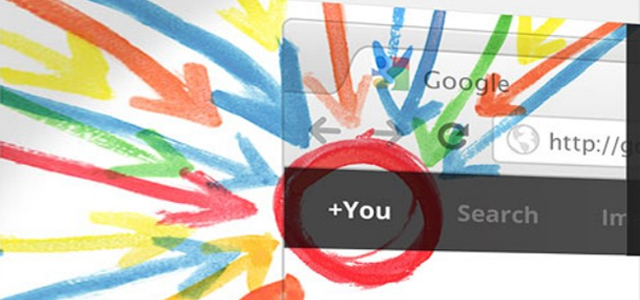Want smarter insights in your inbox? Sign up for our weekly newsletters to get only what matters to enterprise AI, data, and security leaders. Subscribe Now
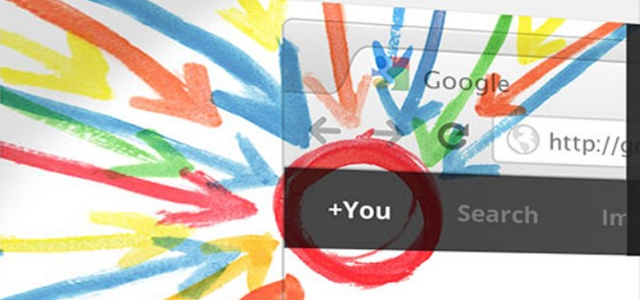
Well, it’s finally happened. Google web search has been Google-Plus-ified.
Today, Google is bringing some specific new features to Google web search, its flagship and most widely used product. In addition to the usual assortment of links, pictures, news items and shopping results you’d see in a typical Google search results page, logged-in Google+ users will now also find several kinds of Google+ content sprinkled in among the normal search results. There are even promoted Google+ profiles and pages — an attempt to compete with Facebook’s highly successful social ads, we’re betting.
We’ve been telling you this was coming for ages, so we hope you’re not too surprised. Eventually, Google+ will be part of everything Google does on the web and mobile.
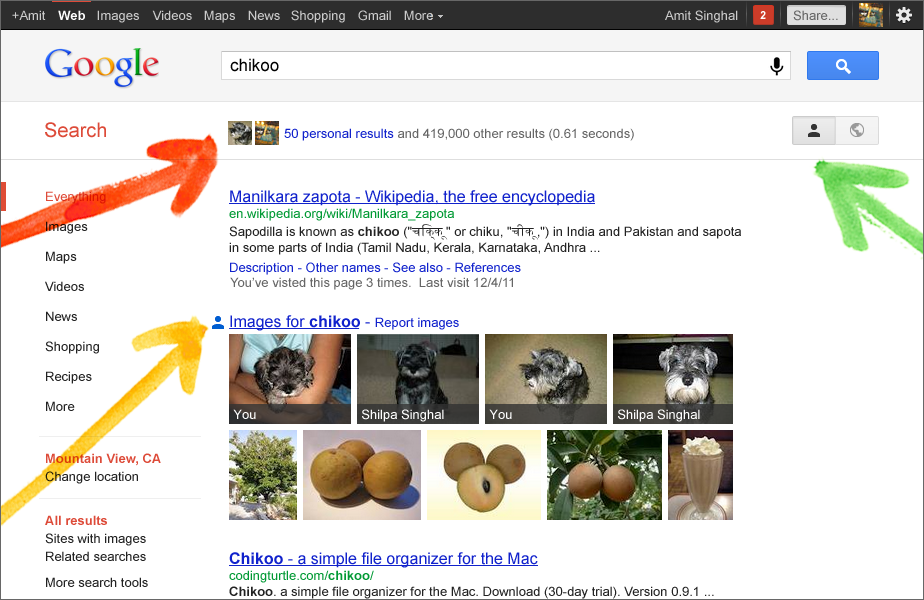
Yesterday, VentureBeat spoke at length with Jack Menzel, Google’s web search product management director, about the newest changes.
“This isn’t the entire Internet, it’s your entire Internet,” he told us. “With Google+, we understand who people are, and we use that.”
This Google+-powered approach assumes certain ties between relevance and personal connections. Links shared by your G+ connections are given more weight and will show up in the first page of web search results with a person icon on the left.
You will also be able to see Google+ posts in search results based on keyword relevance. Basically, Google+ posts are seemingly indexed just like every other page on the web, but they’ll only show up in your search results if the poster is connected to you on Google+.

Photos posted to Google+ will show up in web and image search results — again, only to searchers who are connected to the original person who posted the photo in question.
Finally, you’ll also be able to search for specific people who have Google+ profiles using a Facebook-like people search tool.
The Google+ links, posts and pictures that will appear in your searches are from you, from your friends, and from persons of note (broadly speaking). Mostly, said Menzel, you’ll only see content from people you’re connected to.
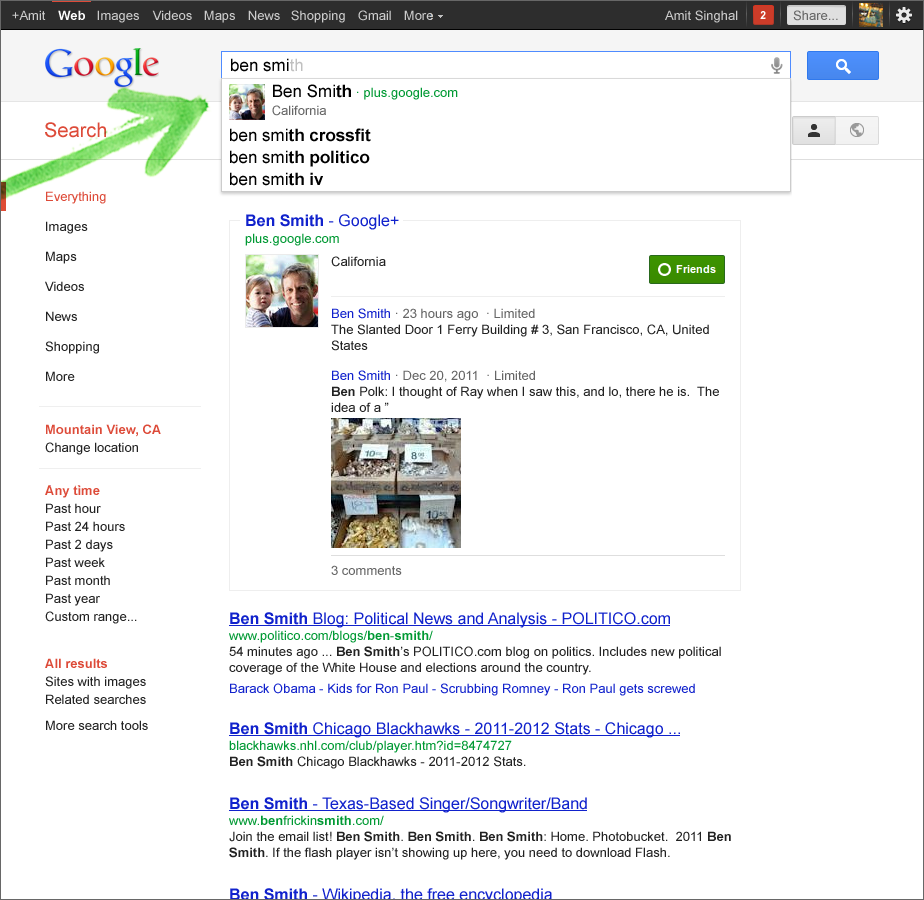
For every piece of social content that shows up in a web search, you’ll be able to see who it’s from, with whom it’s shared and why it’s appearing. “Everything we show you, we label that very clearly and explain why that’s showing up,” said Menzel.
“Security, transparency and control are of paramount importance,” he said. “When we’re returning these personal results, it really is between you and Google … We’re using secure code.”
These social search integrations, which Google is calling “search plus your world,” can be toggled on and off by using the “person” and “world” icons in the top right corner of search results. It’s so easy it takes just one click to disable or enable the new features.
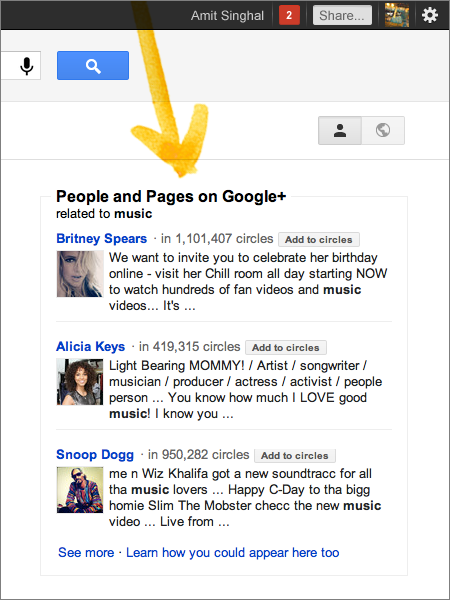 And of course, there are promoted Google+ accounts. On the right side of the results page, you’ll see featured profiles and pages, along with a link reading “Learn how you could appear here too.” While these promoted accounts are currently algorithmically determined, we’re seeing this real estate and approach to Google+ page promotion as eventual competition with Facebook’s highly successful social ads; as such, it might be the most important part of today’s announcement.
And of course, there are promoted Google+ accounts. On the right side of the results page, you’ll see featured profiles and pages, along with a link reading “Learn how you could appear here too.” While these promoted accounts are currently algorithmically determined, we’re seeing this real estate and approach to Google+ page promotion as eventual competition with Facebook’s highly successful social ads; as such, it might be the most important part of today’s announcement.
The business and financial dynamics between Google and Facebook have many points of conflict, but none is greater than the fact that Facebook has for some time been stealing Google’s ad revenue due to its ability to serve highly targeted ads based on social graph data. With Google+, Google is making a bid to acquire and build a social graph just as rich as Facebook’s — richer, in fact. So seeing Google+-related ads is one signal that Google is ready to start putting its social tools to work.
While we struggle to think of a scenario in which our friends might know more about any given topic than the Internet does, we’ll give Google the benefit of the doubt for now. But Menzel said that the judicious addition of a smattering of social media can amplify without overwhelming.
“It usually isn’t the case where you’re making a binary decision of using only personal results or only general results,” he said. “When you’re looking for something new, it’s the mix of those results that’s the most powerful and the most useful.”
And, as Menzel told us, “The more information you have associated with your Google+ profile, the better it gets.”
Google+ results are coming today to web search, and although the company can’t talk timelines for future rollouts, we fully expect to see Google+ results in Google News, Google Maps, Google Shopping and other search properties soon.
“For this launch, we’re just talking about web search and image search,” said Menzel, “but I wouldn’t rule out improvements to those other products.”
If you, like your curmudgeonly correspondent here, bristle at the thought of yet another change to what was once a simple, beautiful product, remember that short months and years ago, image and shopping and news results were not included in the basic web search, either. Eventually, Google+ will be a ubiquitous part of the woodwork — just as Google has planned all along.
As we relayed to you lo these many months ago, Googlers see Google+ as “more than a social network or a collection of communication tools; it’s Google’s plan to bring social information into everything you do on the web, from shopping to search to email and beyond,” in the words of a team member working on building and marketing Google+.
In the end, Google+ is the new mode of Google usage. It’s a unifying umbrella for a diverse network of web and mobile apps. It’s the company’s plan for a stable financial future. Google+ is, in fact, not a mere social network.
